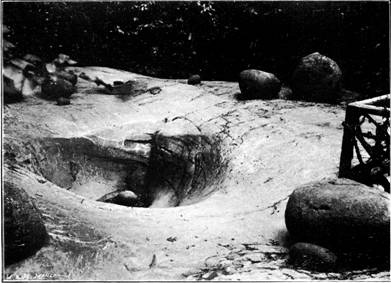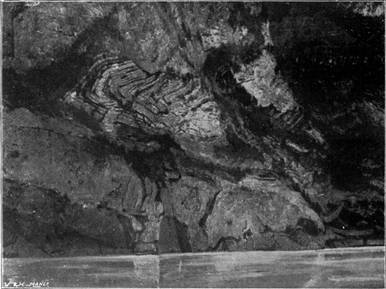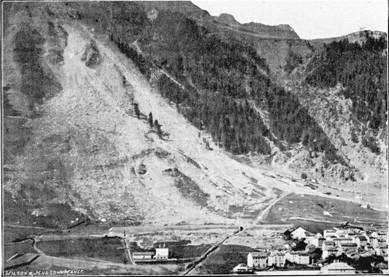A Swiss Holiday
Tempest Anderson
Where to go for a holiday was the question that suggested itself to Yeld and myself, in the autumn of 1899, as to scores of others in Search of something new. The Rockies were attractive but were voted too far for the time at our disposal. The Caucasus seemed more feasible, and we made preparations and got letters of introduction: at the last moment this too was given up, owing to the scare about possible quarantine for the plague. Eventually we started to explore some little known Italian Valleys between the St. Gothard and the Monte Moro, where the microscopic eye of Yeld had detected a possible new expedition or two, and which at any rate promised food for the camera in the shape of subalpine vegetation, unspoilt villages, campaniles, and pilgrimage chapels, with perhaps peasants in costume thrown in.
Arrived at Lucerne we found the heat intense; and if it were so north of the Alps, what would it be in the southern valleys? Our wanderings therefore reduced themselves to a commonplace Swiss round, and we were astonished to find by keeping our eyes open what a multitude of objects of interest were to be found. First and foremost was the Glacier Garden at Lucerne-so hackneyed a popular resort, and yet so interesting to the student. It was discovered by accident nearly 30 years ago, when in widening a street and removing some old moraine material several remarkably line “glacier pots” were unearthed. These consist of roundish holes excavated in the solid rock, of various sizes up to 20 or 30 feet in diameter and depth, and in many cases still containing waterworn boulders by whose rotation they had been excavated. Similar pots on a smaller scale may be seen at the Strid in Wharfedale, and in other places where rivers roll down stones over a rocky floor; but those at Lucerne are of altogether exceptional size and beauty. The rock surfaces between the pots are scored with glacial scratches, and it is supposed that at this part of the glacier which once covered them were situated “moulins” where streams on the glacier surface precipitated themselves into holes in the ice, and furnished the power which kept in rotation the great boulders some of them weighing several tons, which have obviously excavated the pots. The photograph here reproduced shows one of the shallower, some of the best are so deep that their recesses are quite dark and unphotographable.
Then we visited the scene of the great Goldau landslip. Here, in the year 1806, after a wet season, a great portion of a mountain detached itself, slid down, overwhelmed two or three villages and mounted the opposite side of the valley, where the enormous blocks of stone still remain in picturesque confusion. The points that struck me most were how all the stones have followed one another in a well-defined and comparatively , narrow track, and how they have mounted high on the opposite side of the valley and not remained in its bottom as might reasonably have been expected. I have noticed the same thing in other avalanches, notably in that which fell from the Altels on the Gemmi in 1895, though here the material that fell was chiefly ice and snow. The Goldau landslip is within five minutes’ walk of the railway station Arth-Goldau on the Gothard line. The same day we saw from the steamer on the Lake of Lucerne the magnificent contorted strata near Tell’s Platte. At the time of the upheaval of the Alps, which occurred at a comparatively recent geological epoch, the parts of the earth’s crust now represented by Germany and Italy appear to have fallen in, owing to the cooling and contraction of the more deeply-seated parts, and the rocks in the intervening space were crushed. together, folded, and upheaved in consequence. The Lake of Lucerne and other surface features have been since excavated by denudation sub-aerial and glacial. It has been estimated that the foldings represent a diminution in distance of about 70 miles between Basel and Milan.
A day or two later, after a charming walk across the St. Gothard Pass, we saw at Airolo the landslip which occurred in the spring and threatened the town and the railway station at the south entrance of the St. Gothard tunnel. It was caused, as has been the case with so many landslips, by the loosening of rock by the percolation of water. At the time of our visit several large portions of rock were considered dangerous, and were being removed piecemeal by blasting.
Later on we had a week at the Hotel Jungfrau, at the Eggishorn, surely one of the most attractive spots in the world and paid repeated visits to the curious little Marjelen See. This lake, as everybody knows, is situated in a small lateral valley adjoining the Great Aletsch Glacier, its waters are retained by the glacier ice. It used to fill its own little valley and overflow at its head, except occasionally when the water got an exit through or below the glacier ice. As this sometimes occurred suddenly and rapidly and caused damage below the tail of the glacier, a tunnel through the col into the adjacent Fiescher Thal has recently been constructed which partially drains the lake and will prevent it ever again rising to its former level. Masses of ice frequently detach themselves from the glacier and float about the lake as miniature icebergs. If the water drains off some are often stranded like those in the photo. The lake is interesting as having furnished a key to the Parallel Roads of Glen Roy, near Fort William, a curious series of old raised beaches formed apparently by a lake once held up by ice like the Marjelen See. It is specially interesting to Yorkshiremen at the present time, as Mr. Percy F. Kendall believes that he has discovered at Goathland and Grosmont traces of a similar glacial lake on a large scale, which was held up by a great glacier once occupying the bed of the North Sea, and which overflowed into the Vale of York by the valley through which the Pickering and Whitby railway passes.
We left the Eggishorn with much regret for the Zermatt district, and as the weather was cooler determined to try at any rate one Italian valley, so crossed the Théodule to Breuil in the Valtournanche, a charming spot and not yet spoilt like its Swiss rival on this side the pass. Here we had a glorious week till time bade us return. As we recrossed the Théodule it began to snow heavily, and it was evident the weather was breaking. At Visp we looked up the Rhone valley and wondered what they were doing at the Eggishorn ,up among the gathering clouds. We afterwards heard they had two feet of snow that day. We had not cleared out a day too soon.



